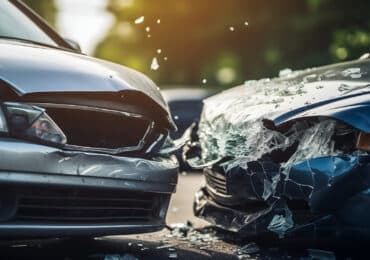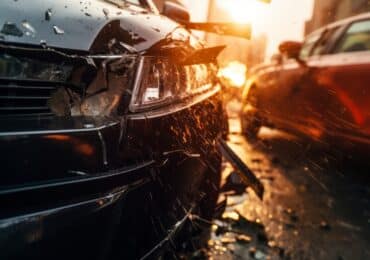Car accidents happen. When they do, determining who is at fault in a car accident is crucial. This determination affects everything from insurance claims to personal accountability.
In the blink of an eye, lives and circumstances can change dramatically, underscoring the importance of understanding liability and fault in these situations. Determining fault goes beyond blame; it requires analyzing facts, following legal standards, and often delving into motor vehicle laws.
The reality of getting involved in a car accident can be jarring, and knowing the steps to take following an incident is essential for any driver. Read on to unravel the intricacies of car accident liability and equip yourself with the knowledge to manage these challenging scenarios effectively.

Understanding The Basics Of Fault Determination
Determining fault in the aftermath of a car accident can often resemble deciphering a complex code. Understanding who is responsible and liable for what can be daunting, but grasping the fundamental principles of fault determination is essential.
The following are key factors that come into play when unraveling the mystery of car accident liability:
- State laws: Location matters greatly. Some states adhere to an ‘at-fault’ system, where the driver responsible for the accident bears the financial responsibility. In contrast, others operate under a ‘no-fault’ system, where insurance companies cover damages irrespective of the at-fault party. Knowing your state’s legal framework is the initial step in comprehending the potential financial consequences.
- Police report: These official documents serve as an impartial, third-party account of the incident. They contain witness statements, accident particulars, and officer observations, making them valuable evidence for establishing fault.
- Traffic laws: Did someone disregard a red light? Exceed the speed limit? Fail to yield the right-of-way? Violations of traffic regulations can significantly impact liability determinations. Familiarizing yourself with the rules of the road and how they apply to your specific circumstances is crucial.
These foundational elements provide a basis for further investigation and the assignment of blame. It’s important to note that establishing fault isn’t about assigning blame but ensuring equitable compensation for those affected by the accident.

The Role Of Negligence In Car Accidents
In determining fault in car accidents, a pivotal concept is negligence. In legal terms, negligence centers on a driver’s failure to exercise reasonable care, resulting in an accident and subsequent harm.
To ascertain who bears the primary responsibility, the courts examine four essential elements:
- Duty of care: Each driver is responsible for operating their vehicle safely, avoiding foreseeable risks that could jeopardize others on the road. This encompasses adherence to traffic laws, maintaining vehicle control, and attentiveness to the surrounding conditions.
- Breach of duty: When drivers engage in reckless behavior or neglect expected actions like speeding, texting while driving, or disregarding stop signs, they may have committed negligence.
- Cause of the accident: Establishing a direct link between the driver’s breach and the actual accident is crucial. Did the negligent action directly contribute to the collision, or were there other intervening factors? This element necessitates a thorough examination of evidence and witness testimonies.
Establishing negligence involves assembling the accident puzzle with acute attention to detail and a comprehensive grasp of these legal principles.
Evidence And Its Impact On Fault Determination
Determining fault in the aftermath of an accident resembles assembling a meticulous puzzle rather than merely assigning blame. Like the cornerstone pieces of a puzzle, solid evidence plays a pivotal role in this process.
Below are the different types of evidence that illuminate the intricate dynamics of fault attribution:
- Witness statements: Unbiased accounts from bystanders serve as invaluable assets. Their observations of the events leading up to and during the collision, including details like traffic signals and driver behavior, provide fresh perspectives and may corroborate other evidence.
- Accident reconstruction: Expert accident reconstructionists play a vital role in complex cases. Utilizing advanced software, they meticulously analyze factors such as skid marks, vehicle damage patterns, and debris placement to recreate the accident scene. This detailed ‘replay’ can precisely identify the point of impact, vehicle speeds, and even driver maneuvers, offering a powerful piece of the fault puzzle.
- Vehicle damage: The scars etched on the vehicles themselves often serve as eloquent witnesses. The location and extent of damage can frequently indicate which vehicle initiated the collision and from which direction. By scrutinizing the specific points of impact and considering how cars typically deform upon collision, investigators gain vital insights into the sequence of events.
- Dashcam footage: In the era of ubiquitous technology, dashcam footage has emerged as a game-changer. Recording real-time road events, these videos provide irrefutable visual evidence, shedding light on critical aspects like red-light violations, sudden lane changes, or distracted driving.
A solitary piece of evidence rarely conveys the entire narrative. Instead, the meticulous and comprehensive compilation of various elements, ranging from eyewitness accounts to technical analyses, enables a lucid and equitable assessment of fault.
Conclusion
Understanding car accident liability is a multifaceted process that combines legal knowledge, careful examination of evidence, and an awareness of the nuances of negligence. While accidents are unforeseeable, having this knowledge can greatly assist in dealing with their aftermath, including the need to manage your stress effectively. Whether you’re a driver, a victim, or just seeking to be more informed, grasping these aspects is crucial for effectively managing the complexities of car accident scenarios.

